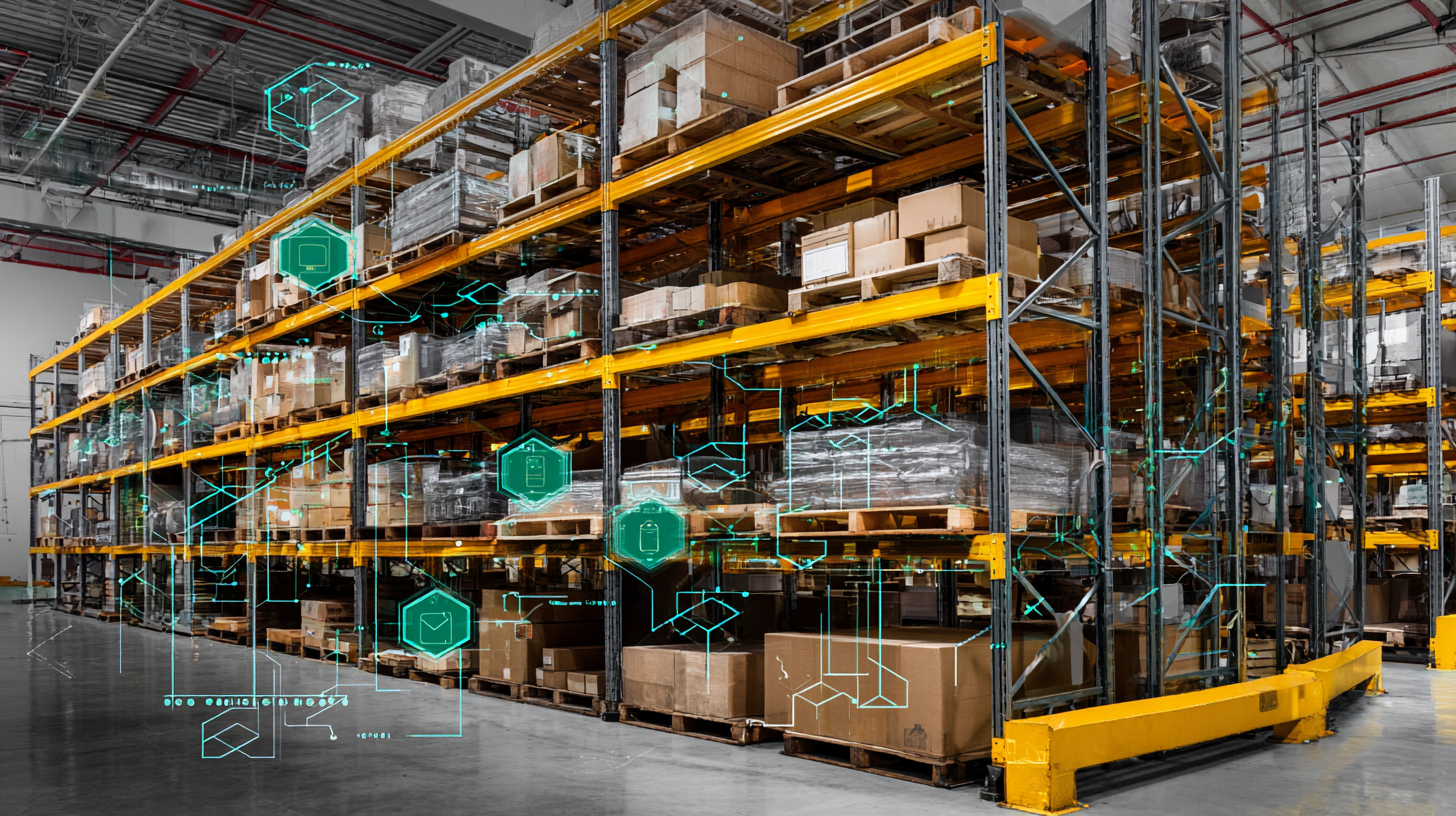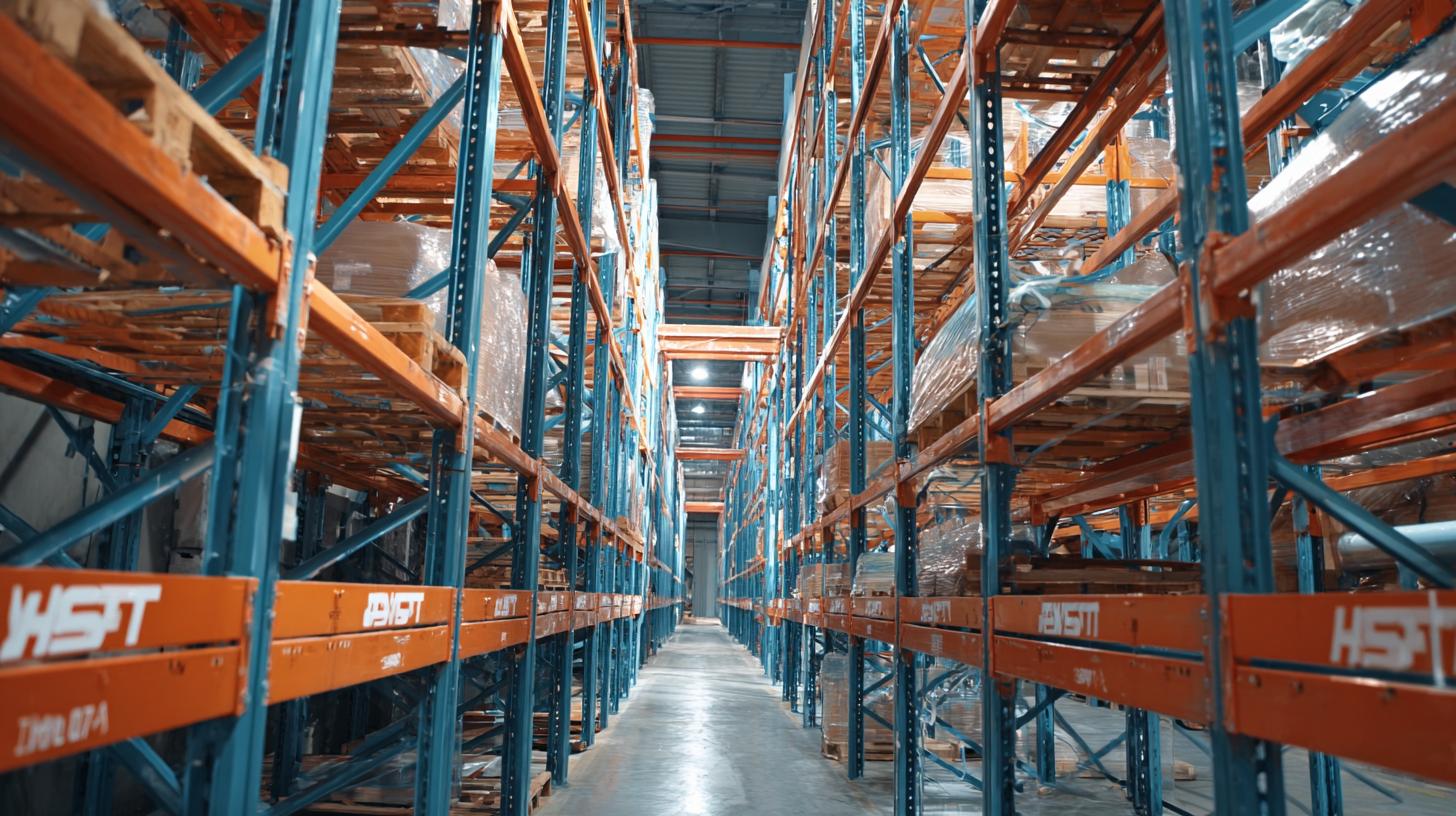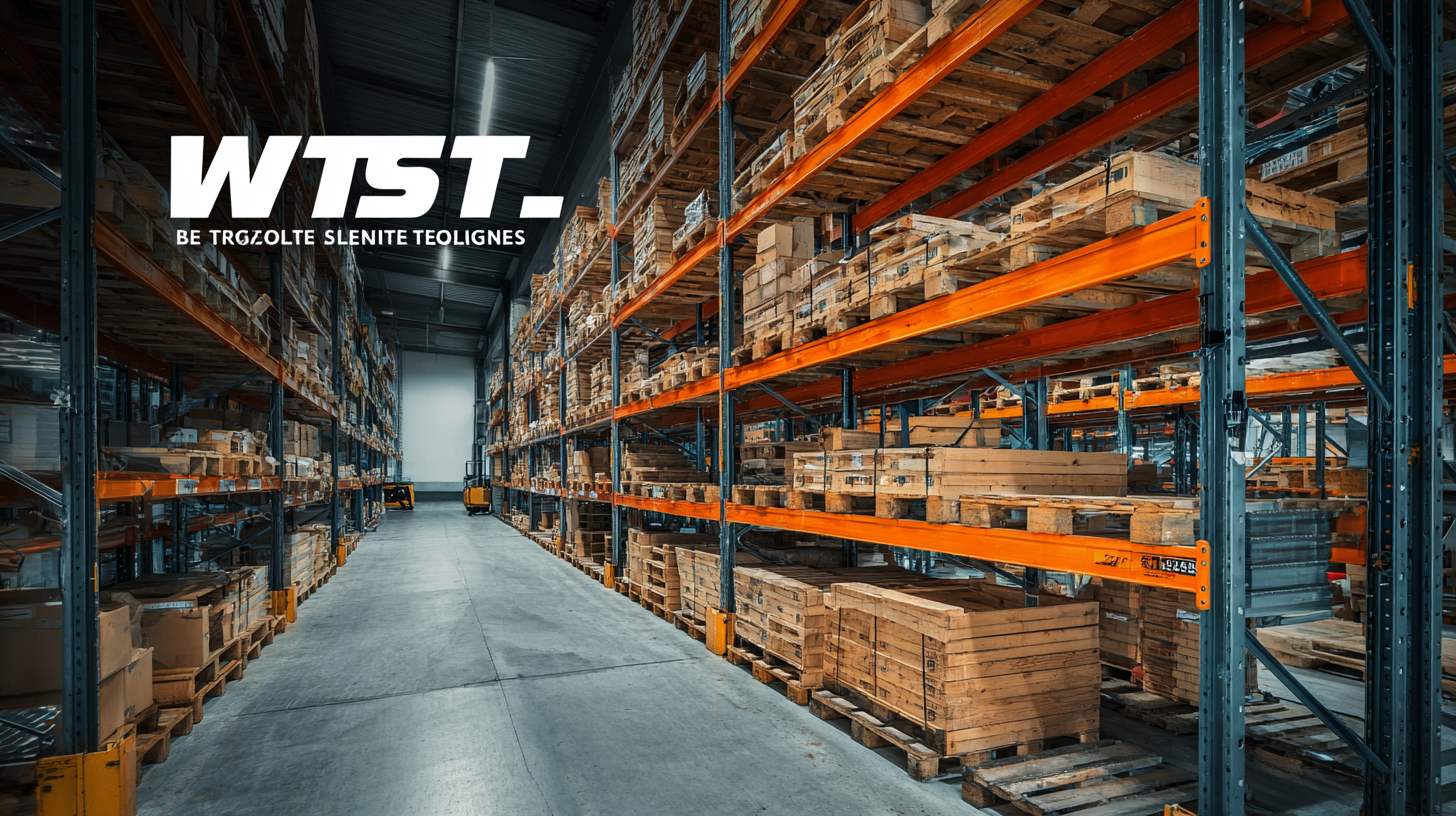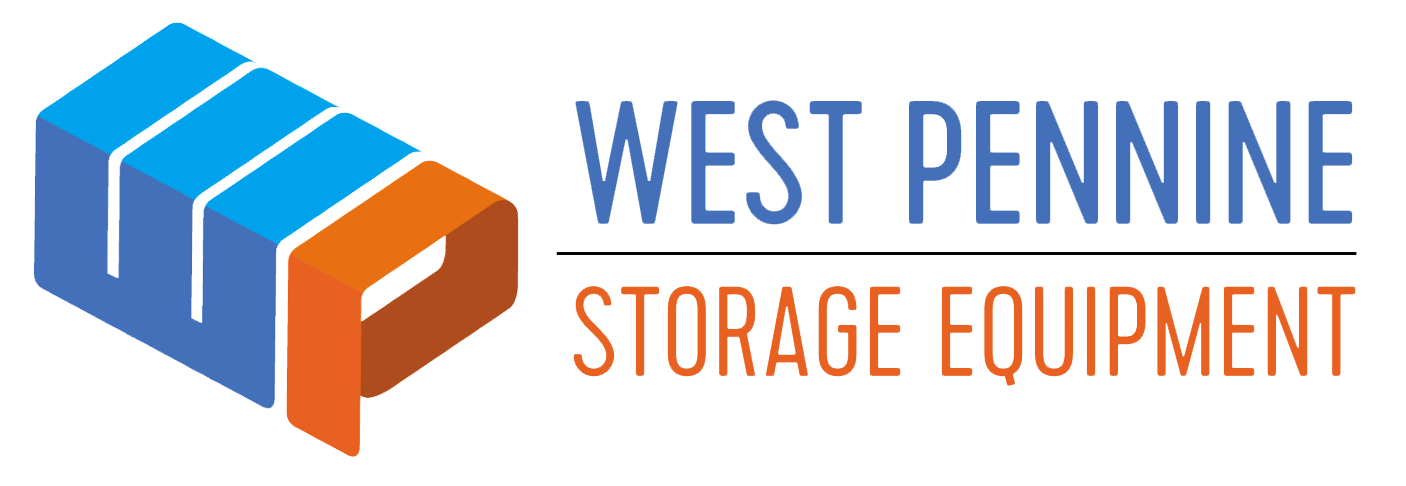How to Choose Best Pallet Shelving Solutions for Future Technology Trends in 2025
In the rapidly evolving landscape of warehousing and logistics, choosing the right pallet shelving solutions is critical to staying ahead of future technology trends as we approach 2025. According to a recent report by Mordor Intelligence, the global warehouse management systems market is projected to grow at a CAGR of 14.2% from 2021 to 2026, highlighting the increasing importance of efficient storage solutions like pallet shelving. With advancements in automation, such as automated guided vehicles (AGVs) and robotics, understanding how these technologies will interact with pallet shelving configurations is essential for optimizing space and improving operational efficiency. Additionally, the rise of e-commerce demands flexible storage systems capable of adapting to fluctuating inventory levels. This blog will explore top strategies for selecting the best pallet shelving solutions that align with these upcoming technological trends, ensuring your warehousing operations are competitive and future-ready.

Key Trends in Warehouse Technology for 2025
As the global digital logistics market is projected to grow from $37.64 billion in 2025 to $120.33 billion by 2032, with a compound annual growth rate of 18.1%, the importance of adopting advanced warehouse technologies has never been clearer. The 2025 Key Trends in Warehouse Technology report highlights the critical need for companies to modernize their warehousing processes. According to a recent study, 84% of decision-makers prioritize warehouse modernization to meet the ever-changing demands of customers and enhance operational efficiency.

Tips: When selecting pallet shelving solutions, consider integrating automation technologies such as autonomous forklifts and advanced navigation systems. These innovations not only improve safety but can also lead to significant cost savings and productivity enhancements.
Furthermore, the Gartner 2025 Strategic Technology Trends report emphasizes the urgency of harnessing AI and emerging technologies. IT leaders are encouraged to leverage these trends as a blueprint for gaining competitive advantages in a rapidly evolving industry.
Tips: Evaluate your current storage solutions and align them with future technologies to ensure scalability and flexibility in your operations. Embracing these advancements now will prepare your warehouse for the challenges of tomorrow.
Factors Influencing the Selection of Pallet Shelving Solutions
When selecting pallet shelving solutions, several factors play a crucial role in accommodating future technology trends. For instance, the adaptability of shelving systems is essential as it allows warehouses to efficiently respond to evolving demands. As technology continues to advance, shelving solutions must be flexible enough to integrate with automated systems and smart inventory management tools. This adaptability enables businesses to optimize space and improve operational efficiency.

Another critical factor is the design and layout of the warehouse. A well-structured warehouse not only enhances workflow but also reduces the potential for damage to products, particularly perishables. The design should facilitate easy access to products while considering the specific needs of the items being stored. For example, items with a higher turnover rate may require more accessible shelving, while those with longer shelf lives can be organized differently. Incorporating such strategic considerations will ensure that the pallet shelving systems not only meet current demands but also align with predicted future trends in technology and logistics efficiency.
Innovative Alternatives to Traditional Pallet Shelving
When considering innovative alternatives to traditional pallet shelving, it's essential to explore options that not only enhance efficiency but also contribute to sustainability. New materials such as recycled plastics and bamboo offer lightweight yet durable alternatives to conventional wooden pallets. These materials not only reduce the carbon footprint but also provide robust support for various storage needs. Additionally, hybrid combinations that integrate both traditional and newer materials can optimize space utilization while minimizing environmental impact.
Tips for selecting the right shelving solution include assessing the specific needs of your warehouse operations. Evaluate the weight capacity and longevity of alternative materials, as well as their resistance to common issues like moisture and pests. Moreover, consider how these innovative shelving systems can be configured for maximum accessibility and efficiency in your space, promoting a smoother workflow.
As technology advances, the future of pallet racking will likely embrace automation and smart tracking systems. Investing in these cutting-edge solutions now can position businesses to effectively meet the demands of fast-paced markets while supporting greener, more sustainable operations.
Future Technology Trends in Pallet Shelving Solutions (2025)
Sustainability and Eco-Friendly Shelving Options in 2025
As we look toward 2025, the emphasis on sustainability and eco-friendly shelving options will play a crucial role in shaping the future of pallet shelving solutions. The increasing demand for environmentally responsible practices is prompting companies to consider more sustainable materials such as recycled metal and wood alternatives. This shift not only addresses eco-conscious consumer preferences but also enhances brand reputation, positioning businesses as leaders in sustainability.
Incorporating eco-friendly shelving systems can significantly reduce a company's carbon footprint. Exploring options like modular shelving made from renewable resources, or systems that promote energy efficiency, can lead to lasting benefits. Additionally, investing in smart shelving solutions that optimize space and reduce waste aligns with the technological advancements we anticipate in 2025, creating a harmonious balance between functionality and environmental responsibility. Businesses that prioritize these sustainable options will not only comply with emerging regulations but also resonate with a growing base of eco-aware consumers.
How to Choose Best Pallet Shelving Solutions for Future Technology Trends in 2025 - Sustainability and Eco-Friendly Shelving Options in 2025
| Criteria | Description | Score (1-10) | Sustainability Rating |
|---|---|---|---|
| Material Quality | Use of recycled and eco-friendly materials | 8 | High |
| Load Capacity | Ability to hold heavy weights safely | 9 | Medium |
| Ease of Assembly | Time and effort required to set up the shelving | 7 | High |
| Versatility | Adaptability to various types of goods | 8 | High |
| Eco-friendly Features | Incorporation of energy-efficient processes | 9 | Very High |
| Cost Effectiveness | Affordability in relation to features offered | 6 | Medium |
Cost-Effective Strategies for Implementing New Shelving Technologies
When planning for future technology trends in pallet shelving, cost-effectiveness should be a primary consideration in your implementation strategies. Transitioning to innovative shelving solutions often involves significant upfront costs; however, analyzing long-term savings can lead to smarter investment decisions. By conducting a thorough cost-benefit analysis, businesses can identify which shelving technologies offer the best return on investment based on efficiency, durability, and flexibility. For instance, investing in adjustable shelving systems can accommodate changing inventory needs without requiring a complete overhaul, ultimately reducing costs over time.
Moreover, exploring partnerships with technology providers can enhance the implementation process while spreading financial risks. Many tech companies offer leasing options or flexible payment plans, making it easier for organizations to adopt advanced shelving technologies without overwhelming their budgets. Additionally, workforce training should be viewed as a cost-effective strategy to maximize the benefits of new shelving tech. By ensuring that staff are well-equipped to utilize these systems efficiently, companies can improve productivity and reduce errors, leading to overall operational savings in the longer term.

